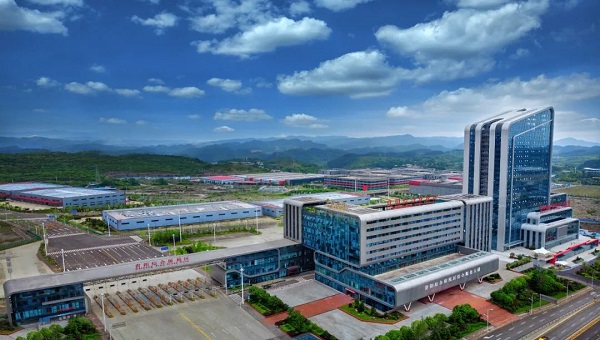Guizhou plans for dry port to boost foreign trade

The Guiyang Free Trade Zone in Southwest China's Guizhou province prepares for the construction of an international dry port. [Photo/Guiyang Daily]
Guiyang, capital of Southwest China's Guizhou province, is preparing for the construction of an international dry port in the Guiyang Free Trade Zone to reduce the time and cost of logistics for exporting and importing goods.
At the beginning of this year, the State Council issued the Opinions on Supporting Guizhou in Blazing New Trails in the Development of the Western Region in the New Era, which provides support to help Guangzhou Port, Shenzhen Port and Beibu Gulf Port establish inland dry ports in Guiyang.
An inland dry port is also known as an international land port, which provides port services such as customs declaration, customs inspection, issuing bills of lading, and circulation of containers.
It transfers the functions of ports to inland areas, and can realize sea and railway combined transportation to improve the efficiency of inland goods entering and leaving ports.
The construction of dry port requires transportation channels and platforms to attract goods and industries, as well as loading and unloading areas under customs supervision, foreign trade service platforms, and logistics ports.
Guiyang is currently connected with the Guangdong-Hong Kong-Macao Greater Bay Area and the Yangtze River Economic Belt, and is serviced by the China-Europe Railway Express, China-Laos Railway, and New International Land-Sea Trade Corridor.
The Guiyang Free Trade Zone is currently building a loading and unloading area under customs supervision, which can support international train transportation and provide bonded processing, warehousing, customs, taxation, quarantine and foreign exchange services.
The dry port will allow foreign trade companies to complete customs clearance and declaration for inspection and quarantine more conveniently. It will allow more concentrated transportation of general trade goods, cross-border e-commerce goods, transit goods, and bonded goods in the same area.
Presented by China Daily.
黔ICP备05001922号
All Rights Reserved.
Presented by China Daily.
黔ICP备05001922号



